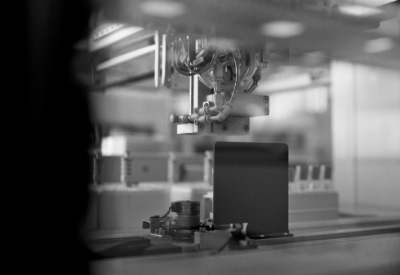
Tritium-Powered Betavoltaic Batteries Built for Extremes
NanoTritium™ batteries harness the power of tritium beta decay to generate a consistent flow of low-level electrical energy. This betavoltaic technology provides ultra-long-life power to devices where traditional batteries fall short—in remote, high-risk, or maintenance-prohibitive environments.
Key Features:
- 20+ year lifespan
- Nanowatt to microwatt range
- Performs in high-vibration, extreme temperatures, and vacuum conditions
- No maintenance, charging, or replacement cycles
Choose the Power Profile That Fits Your Platform
Our NanoTritium™ battery line is built to support a range of low-power demands with scalable voltage and current outputs. We offer multiple configurations, and custom solutions are available for advanced integration needs.
Power Series Comparison
| Series | Voltage Options | Output Current | Status |
|---|---|---|---|
| P100 | 0.8V, 1.6V, 2.4V | 50–350 nA | Available |
| P200 | 0.8V, 1.6V, 2.4V | 52–156 µA | Development |
Supported Configurations:
- 28-pin CSBOP
- LCC 44
- LCC 68
- 100 microwatt prototype (Projected)
- Custom packages on request
Effective Across Sectors
NanoTritium™ Packages and Applications
Funded by NASA, NIH, and the Department of Defense
City Labs’ technology is backed by over a decade of federally funded innovation. Our batteries have powered advanced research and development projects in aerospace, defense, and medicine.
Recent Project Highlights:
- NASA: Nuclear micropowered probes for lunar exploration (NIAC Phase II)
- NIH: Betavoltaic battery for leadless pacemakers (CRP award)
- US Air Force and Space Force: COMSEC power systems and self-powered autonomous imaging sensors (SBIR Phase II)

Safe, Sealed, and Built to Last
Our batteries are engineered for safety, sustainability, and peace of mind.
- Tritium’s low-energy beta emissions are fully contained in a hermetically sealed package
- No moving parts, liquid electrolytes, or thermal runaway risk
- Decays to stable helium-3, with no dangerous chemical waste
- End-of-life recycling and disposal supported by licensed facilities
Frequently Asked Questions
How long do NanoTritium™ batteries last?
Over 20 years, with gradual, predictable power decay based on tritium’s 12.3-year half-life.
What configurations are available?
Standard packages include CERDIP and LCC styles; custom configurations are available.
Can I test a unit for my application?
Yes. Contact us to discuss evaluation units, pilot projects, or technical specifications.
How much do they cost?
Base pricing begins at $5,250 per battery; bulk pricing and custom options are available.
How safe is tritium?
Tritium emits low-energy beta particles that cannot penetrate skin and are safely contained within our battery packaging.
Are there regulatory considerations?
Yes. Betavoltaic products must comply with handling and transport regulations. We support all required licensing and documentation.
Let’s Power the Future—Together
City Labs welcomes collaboration with R&D teams, government agencies, commercial engineers, and more. Whether you need a drop-in power solution or a customized nuclear battery system, our team is ready to help.
Contact UsThe Nuclear Battery Company With a Vision
Ready to power your next innovation or learn more about our technology?
Contact Us Today









